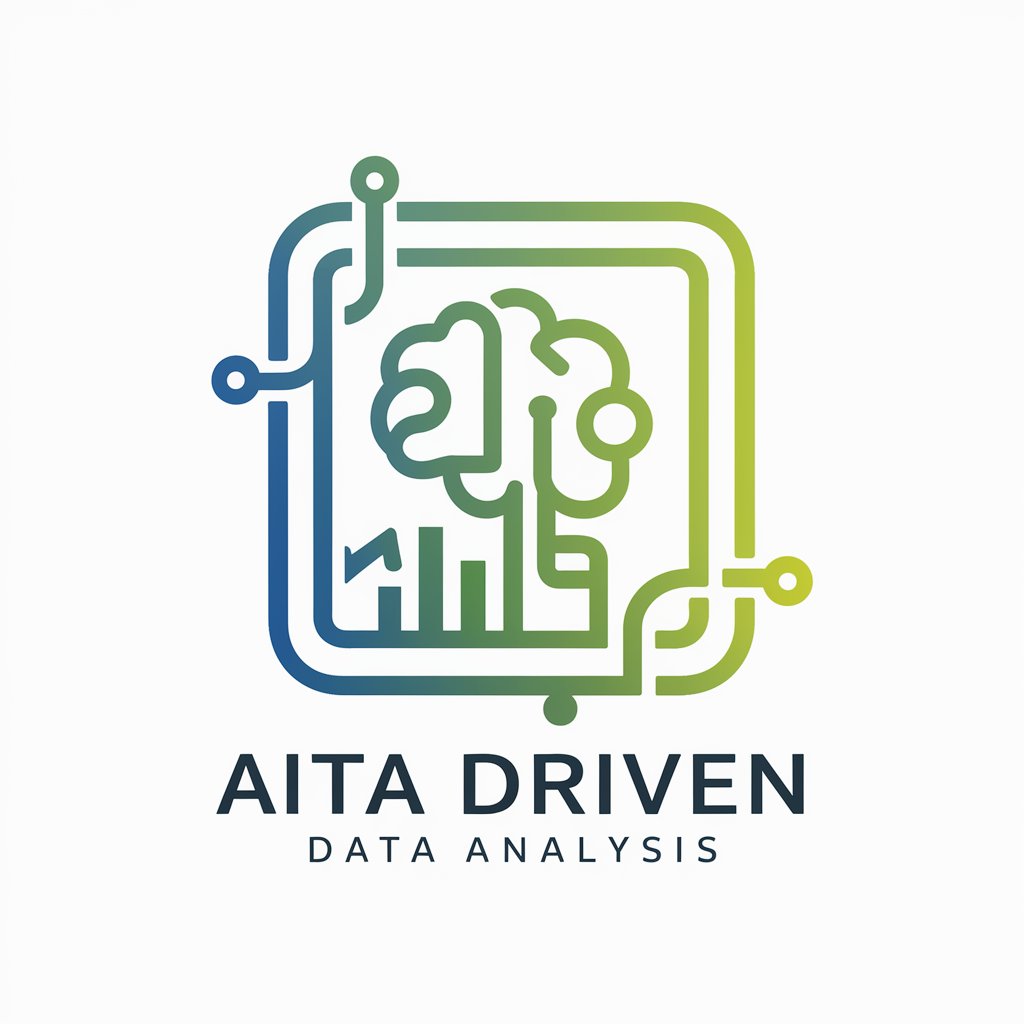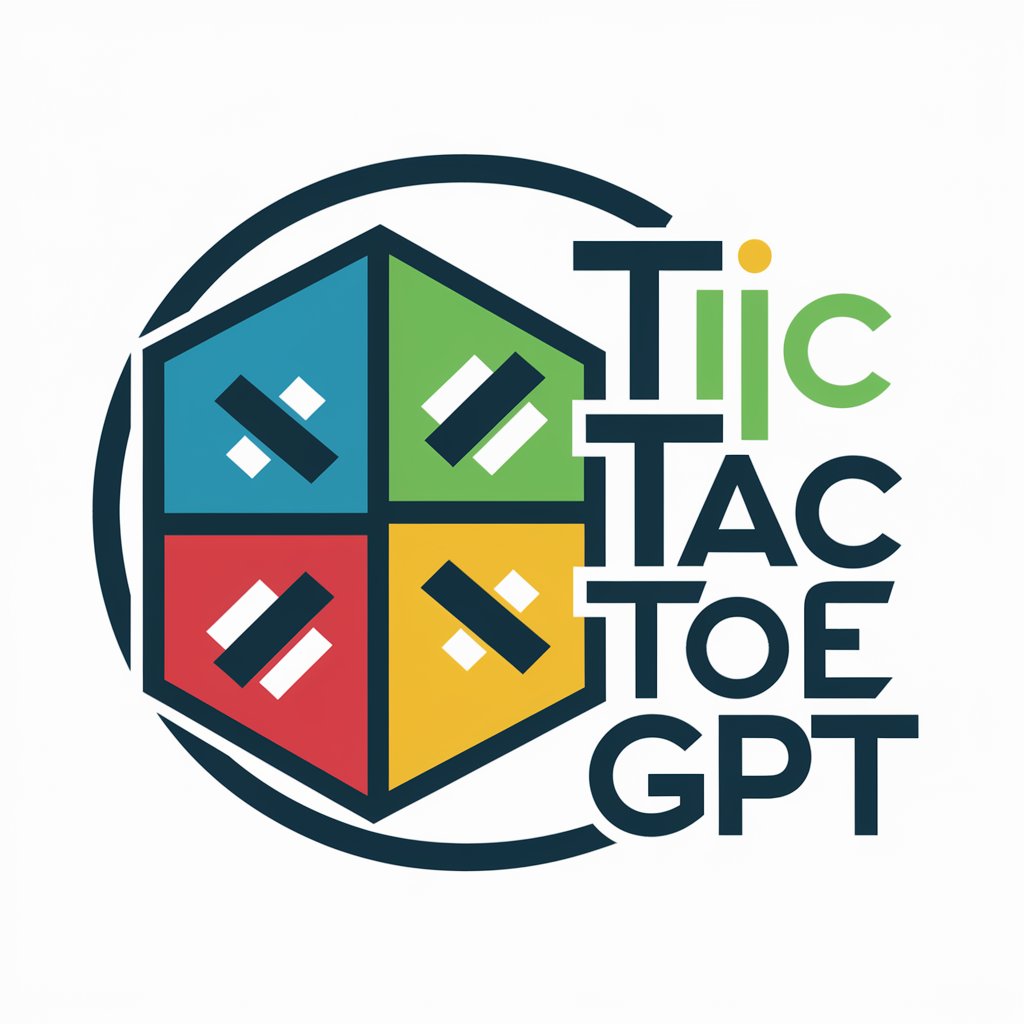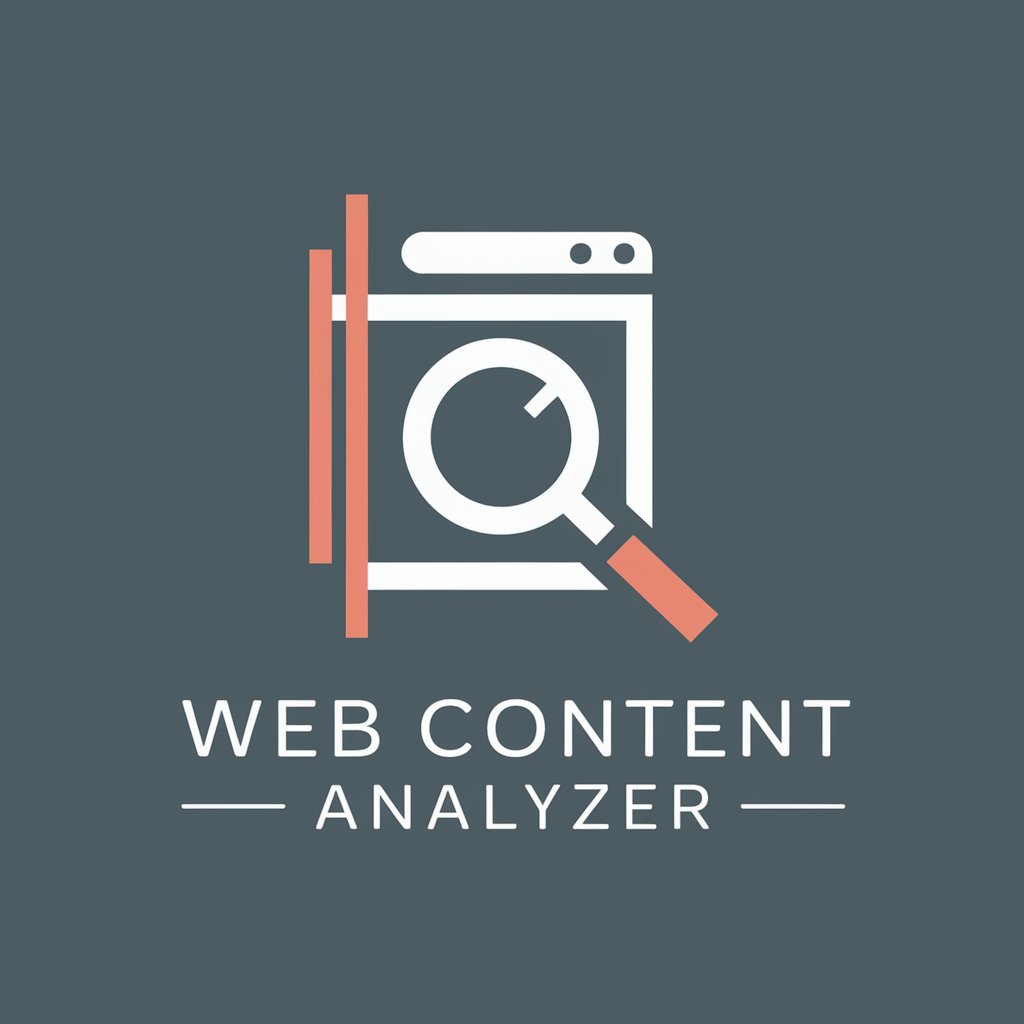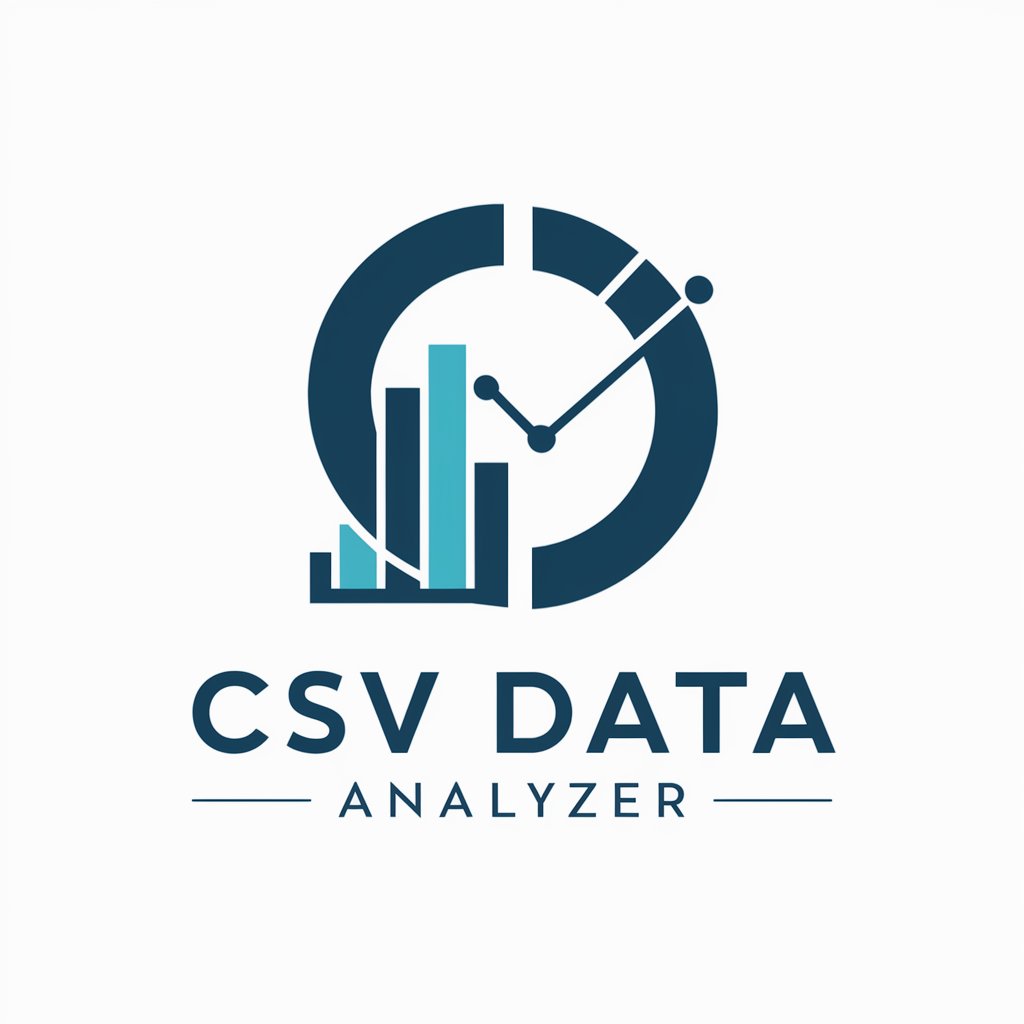
Excel Data Analysis and Visualization-AI Excel analysis assistant
AI-powered insights from your Excel data

Analyzes and visualizes Excel data with custom charts and insights. *** Upload Your Excel file!
Upload your Excel dataset for analysis.
Which columns should I focus on?
Do you prefer bar charts or line graphs?
Any specific insights you're looking for?
Get Embed Code
IntroductionExcel Data Analysis Overview to Excel Data Analysis and VisualizationJSON Code Correction
Excel Data Analysis and Visualization is designed to streamline the process of extracting valuable insights from data stored in Excel files. By leveraging Python libraries, such as pandas, and powerful visualization tools, this service helps users manage, clean, and analyze data efficiently. It is tailored to perform tasks like identifying trends, uncovering correlations, and generating clear visual representations (charts, graphs, etc.). For instance, imagine you have a sales dataset containing hundreds of rows, with data on sales figures, customer regions, and product categories. With this service, you can clean the dataset to remove missing values, analyze patterns in sales trends, and visualize how sales vary by region or product category. The key benefit lies in transforming raw, unorganized data into actionable insights and visuals, making it easier for users to interpret and make informed decisions.
Main Functions of Excel Data Analysis and Visualization
Data Cleaning and Preprocessing
Example
Handling missing values, duplicates, and outliers.
Scenario
Data Exploration and Statistical Analysis
Example
Identifying correlations, trends, and patterns.
Scenario
Imagine a company tracking employee performance over time across various departments. By performing exploratory data analysis (EDA), the service can compute statistical metrics like mean, median, standard deviation, and correlations. This could reveal that employees in the Marketing department are more productive during certain months of the year, allowing management to adjust workflows accordingly.
Data Visualization
Example
Creating graphs, bar charts, heatmaps, and scatter plots.
Scenario
Let’s say you're analyzing sales data by product category and region. With the visualization capabilities, you can generate a heatmap showing sales intensity across regions, or a bar chart to compare sales figures by product. This visual context helps highlight trends at a glance, making it easier to communicate findings to stakeholders or team members.
Advanced Data Aggregation
Example
Summarizing data through grouping and pivot tables.
Scenario
In a financial report, you might want to summarize monthly expenditure by department. By applying aggregation functions like `groupby()` in pandas, the service can generate a pivot table or a summarized view, helping to break down large datasets into digestible chunks. This is particularly useful in accounting or budgeting scenarios where high-level summaries are often needed.
Time Series Analysis
Example
Forecasting future trends using historical data.
Scenario
For a retail company, you might want to forecast next month's sales based on the past year's data. Using time series analysis tools, the service can help smooth out seasonality, identify cyclical patterns, and apply forecasting models (like ARIMA or exponential smoothing). The resulting forecast enables better planning for inventory or staffing.
Ideal Users of Excel Data Analysis and Visualization
Business Analysts
Business analysts are responsible for interpreting data to drive strategic decisions. They require tools that can quickly analyze data, generate insights, and present findings visually. They would benefit from the service by gaining the ability to clean datasets, run statistical analyses, and create easy-to-understand visualizations, enabling them to present actionable insights to management or other stakeholders.
Data Scientists and Statisticians
Data scientists and statisticians rely on data processing, exploration, and statistical modeling for their work. They need advanced functionalities like time series analysis, correlation detection, and machine learning integration. This service helps them streamline the data cleaning and exploratory analysis phases, allowing them to focus on higher-level modeling tasks. Furthermore, the visualization features can help them communicate complex statistical results in an easily digestible format.
Financial Analysts
Financial analysts need tools for aggregating large datasets, detecting trends, and forecasting future performance. They would find value in the ability to aggregate financial data, perform time series analysis for stock price prediction or budget forecasting, and generate summary reports. By using this service, financial analysts can automate repetitive tasks, produce insightful reports, and visualize trends in an engaging and informative manner.
Operations Managers
Operations managers use data to monitor business processes, identify bottlenecks, and optimize workflows. They can use the data cleaning and visualization functions to track performance metrics, evaluate process efficiency, and identify areas for improvement. With tools like data aggregation and time series analysis, they can optimize inventory levels, workforce schedules, and supply chain operations.
Researchers and Academics
Researchers and academics often work with large datasets from experiments, surveys, or studies. They would benefit from using the service to clean and preprocess data, conduct statistical analysis, and create clear visual representations of their findings. Whether publishing research papers or presenting at conferences, these visualizations can help communicate complex results in an intuitive way.
How to Use Excel Data Analysis and Visualization
Visit aichatonline.org for a free trial—no login or ChatGPT Plus subscription required. This allows immediate access to the Excel Data Analysis and Visualization GPT without barriers.
Step 2: Prepare Your Excel File
Ensure your Excel file (.xlsx or .xls) is clean, with labeled columns and structured data. Avoid merged cells or hidden formatting. Remove sensitive or unnecessary data to protect privacy and speed up analysis.
Step 3: Upload and Define Objectives
Upload your Excel file directly into the chat. Clearly specify your goals—such as trend analysis, correlation checks, or visualization needs (e.g., bar charts, heatmaps)—so the tool can tailor the analysis.
Step 4: Review Initial Insights and Interact
The tool will clean, explore, and present key metrics, outliers, and data gaps. You can interact by requesting deeper insights, filtering specific variables, or refining visualExcel Data Analysis Guide outputs as needed.
Step 5: Export or Document Results
Download charts, tables, or code snippets for integration into reports, presentations, or further editing. Ask for customized exports (e.g., PNG, CSV) or Python code to replicate the analysis offline.
Try other advanced and practical GPTs
Tic Tac Toe
Play Tic Tac Toe with AI power.

Helpful Content Analyzer By Sarvesh
AI-powered content scoring for Google SEO

مترجم احترافي للعربية
AI-powered Arabic translation and refinement

The Profile System A.I
AI-driven content creation made easy.

JJ Never Sleeps Resume Reviewer
AI-powered resume optimization and feedback.

IB Biology Buddy 2025
AI-Powered Tool for Mastering IB Biology

Resumo PDF Expert
AI-powered summaries for deep academic insight

印度股票分析大师
AI-driven insights for smarter investments.

GPT 4o Games Channel
Engage, challenge, and entertain with AI-powered games.

1.4. - Bases teoricas
AI-powered tool for seamless theoretical framework creation.

Website Content Analyzer
AI-powered content insights for website optimization.

설교 글쓰기 교정 조언자
AI-powered writing enhancement for sermons

- Academic Research
- Market Research
- Financial Analysis
- Survey Insights
- HR Analytics
FAQs About Excel Data Analysis and Visualization
How does this tool handle large Excel datasets?
It processes large files in chunks using Python’s pandas library, preventing memory overload. The tool provides interim summaries and visual feedback as it analyzes sections of the data, ensuring performance and continuity.
Can I request specific types of charts or analyses?
Yes, you can ask for specific visualizations like scatter plots, histograms, or time series. You can also request analyses such as correlation matrices, pivot tables, or regression summaries tailored to your dataset.
Does this tool support multi-sheet Excel files?
Yes. It detects all sheets in the Excel file and allows you to choose one or multiple sheets for analysis. It can merge sheets if they share schema, or handle them separately if structurally different.
Is data privacy ensured during analysis?
Absolutely. No data is stored or shared beyond the session. Users are encouraged to anonymize sensitive fields. All file processing is ephemeral and exists only during the live interaction window.
Can I reproduce the analysis offline?
Yes. The tool can generate Python code using pandas, seaborn, and matplotlib so you can replicate the analysis offline. You can request the full script or individual code blocks for charts, stats, or cleaning.






